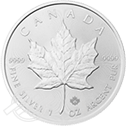Let the Money Printing Continue
Much of the recent talk in the financial media has been centered on Donald Trump taking office and what the new Presidential administration may be able to accomplish. There has been much talk of pro-growth policies, rising inflation and higher interest rates.
Although the U.S. is no longer actively engaged in QE, and although the U.S. has begun tightening interest rates, such is not the case in other parts of the world. Ultra-low monetary policies remain in place in several key economies and central banks remain actively engaged in various easing measures.
The European Union remains the subject of much discussion with Great Britain leaving the union and with numerous other economic and geopolitical issues. Discussions about the potential breakup of the EU appear to be on the rise, and such a breakup could potentially have a significant impact on global financial markets.
The EU continues to struggle, and ECB President Mario Draghi appeared cautious on Thursday about the EU economy.
Draghi said that the central bank remains committed to its accommodative monetary policies. In his opening statement, he said “Economic growth in the euro area is expected to be dampened by a sluggish pace of implementation of structural reforms and remaining balance sheet adjustments in a number of sectors. The risks surrounding the euro area growth outlook remain tilted to the downside and relate predominantly to global factors.”
Draghi also discussed the possibility of the ECB increasing the size and/or duration of its asset purchases if necessary.
Mr. Draghi appears to be very dovish in his remarks, and although such remarks are nothing new, they do seemingly highlight the ongoing difficulties in the region spurring healthier and sustainable levels of inflation.
The difficulties seen in the EU and elsewhere could arguably call into question the effectiveness of central bank policies and easing measures, and you have to wonder what other tools the central bank may look to use if its asset purchases are not achieving the desired effect.
In the U.S., just because rates have started to rise doesn’t mean that they cannot go back down.
One could make the argument that the ongoing subpar growth in the global economy and the potential for wider-reaching monetary policy tools by global central banks necessitates the need for hard assets within a portfolio that can potentially provide a hedge against declining currency values, inflation, deflation and more. Hard, physical assets like gold and silver bullion could potentially play an important role within an investment portfolio.
Buying and holding physical gold or silver has also never been easier than it is today. Speak with an Advantage Gold account executive today about the potential benefits of physical gold and silver ownership. Our precious metals professionals are here to answer your questions, and can even show you how to buy and hold these key metals using your IRA account.
Don’t wait for the next stock market crash or for the next round of QE before taking action. Explore your options for physical gold and silver ownership. Call us today at 1-800-341-8584 to get started.
Tags: advantage gold, draghi, ecb, eu, gold, monetary policy, trump, U.K.


